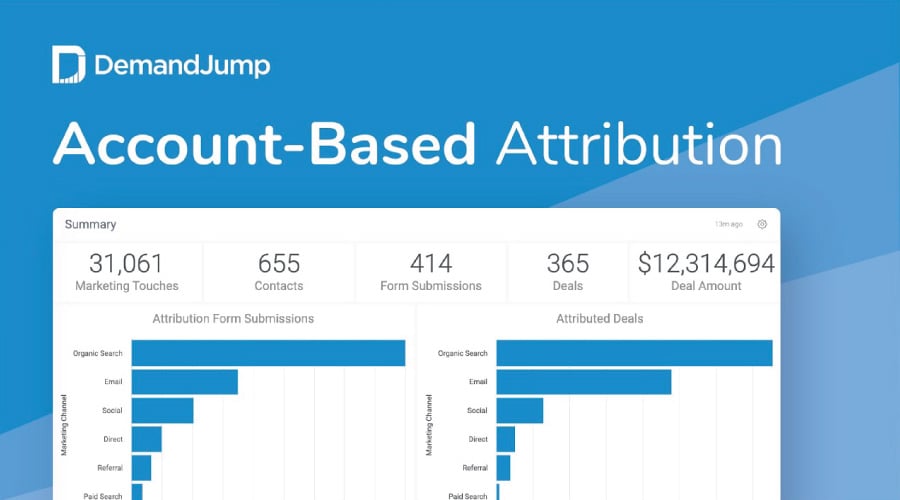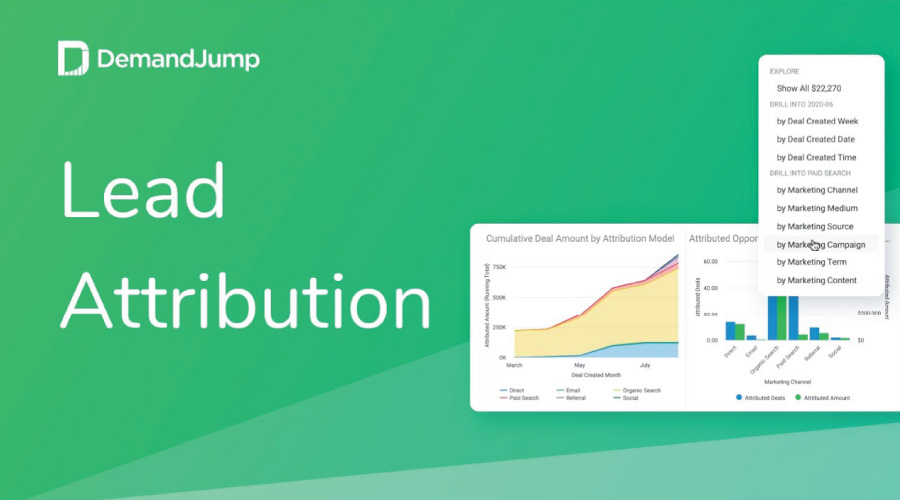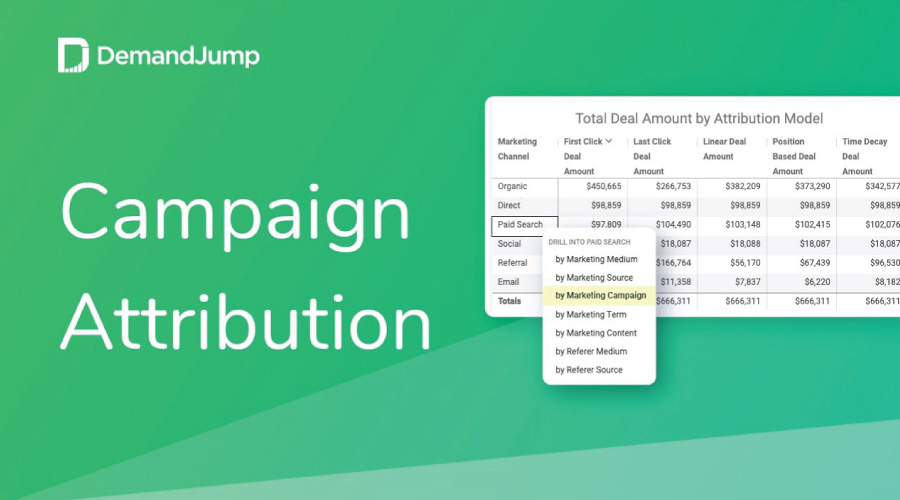Marketing Attribution
By embracing DemandJumps approach to SEO, we have been able to increase our organic rankings within just 2 weeks of implementing recommendations. This helped us see a 22% increase in organic search month-over-month.
Robert Jacko Vice President Digital Marketing @ Homage
DemandJump has become a crucial extension of our marketing team, providing game changing insights to fuel and propel all aspects of our digital marketing efforts. The DemandJump platform is a must have, we are seriously impressed.
Tim Lavinder Director of Ecommerce @ Hotsox
We used to spend hours looking for insights in dozens of tools and reports. Now we log into one place to find out what customers are doing and how to meet them where it matters most.
Zach Roop Digital Marketing Manager @ Dometic
We use DemandJump recommendations as our digital to-do list. We love going in and seeing the recommendations and knowing what to do next.
JoLynda Wilson Marketing Director @ IWC
Our Customers Love Attribution






Account-Based Attribution
Eliminate wasted time and spend. With DemandJump's automated account-based attribution
solution you will know with certainty which efforts are driving ROI.
Measure Your Marketing Performance
Find out which of your marketing efforts are making the biggest impact. See which channel drove consumers to you, the pages they visited, and all touchpoints along their path to purchase.
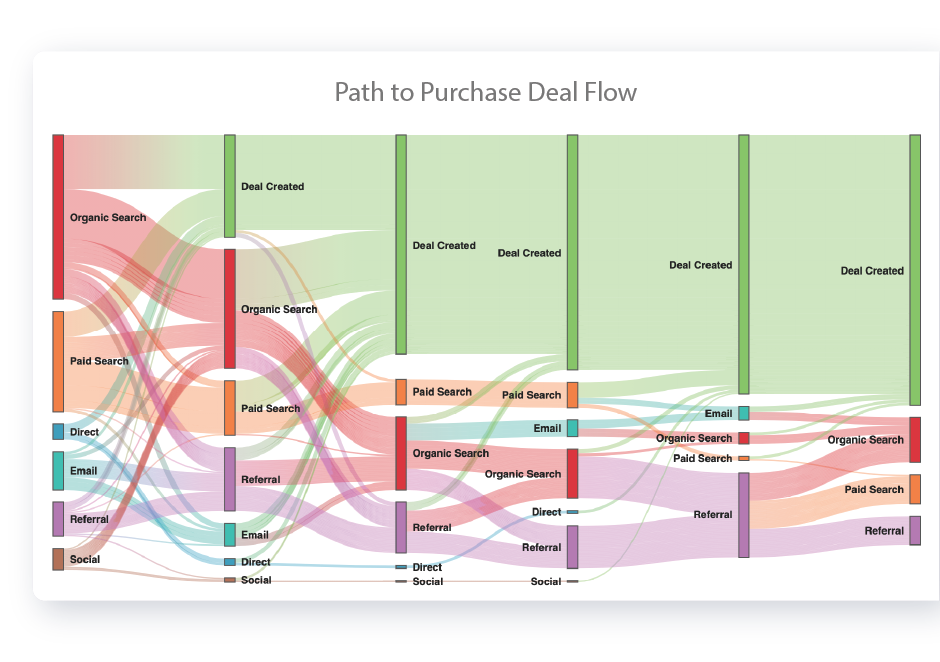
From Marketing Spend to Actual Pipeline Value
When a lead becomes a customer, you need to know which marketing channel or campaign should receive credit, and account-based attribution will give you the answers.
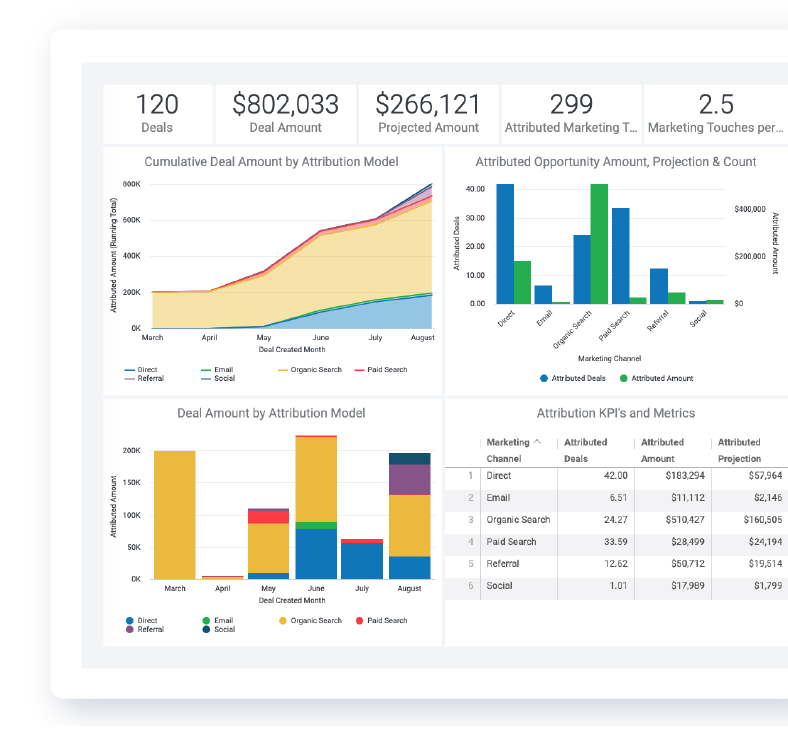
Organic & Paid Search Keyword Attribution
Beyond channel, campaign, and content attribution, you will finally see which organic and paid keywords are generating deal and opportunity revenue.
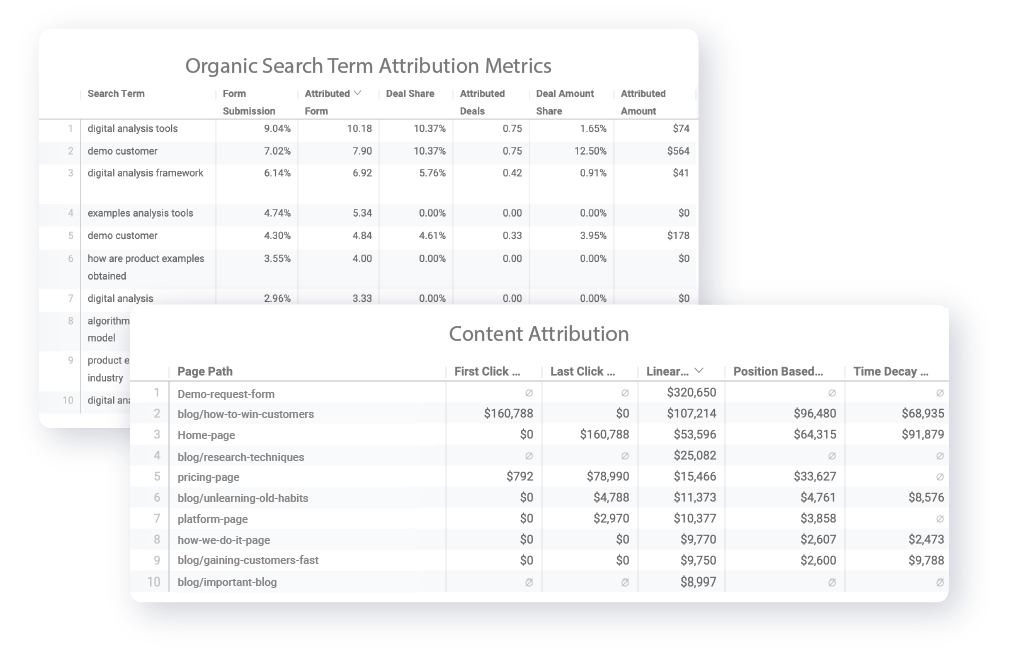
See a Demo of Attribution
What is Sales Forecasting?
Sales forecasting is exactly what it sounds like - estimating future sales as accurately as possible usually including historic data as a basis. In a more precise sense, the major goal that sales forecasting allows companies to accomplish involves predicting achievable sales revenue. This puts them in a better position to efficiently allocate resources moving forward, which ultimately gives way to the most important benefit of all: planning for future growth in the most intelligent way possible.
This is closely related to another important concept in the business world: marketing attribution. Regardless of the marketing attribution model you select, the overall theme is that you are looking backwards, not forwards, to see what you can learn. Attribution technology allows you to take a deep dive into your revenue and marketing data, all so that you can see which of your techniques were the most effective and which did not pay off in the way you thought they would. A data driven attribution model will allow you to pour over insights obtained over a long period of time, all so that you can figure out what worked and, more importantly, what did not.
Therefore, attribution by its very nature (be it a first touch attribution model, last click attribution or a custom model) serves as the foundation upon which your accurate forecasting efforts will be built. To put it another way, you cannot properly use the lessons of the past to inform the future if you did not completely understand the narrative of those past efforts to begin with. Remember that learning how to measure marketing attribution means understanding every experience along the customer journey, from first touch all the way to the point when a sale was made. By getting this full multi touch representation of the customer journey by way of your marketing attribution model, you have filled in two key blanks that are a requirement for sales forecasting accuracy in the future.
Why is Sales Forecasting Important?
Sales forecasting is one of the most important parts of the financial planning process, without question. It acts as something of a self-assessment tool that uses past and even current sales statistics to accurately predict future performance. If you are reasonably certain you know what the future holds for your business, suddenly you also know the steps you need to meet or even exceed those expectations.
Think about it like this. If your sales forecast indicates that you make a significant portion of your sales in the month of December (say, 25% or more), you know that you need to ramp up manufacturing months in advance in order to prepare for that rush. But at the same time, you also need to increase your advertising spend to support the influx in orders you are expecting - which is another area where marketing attribution software and related tools will come in handy.
Multi touch attribution tools pull in data from all of your various marketing efforts, from SEO to social media to content creation and more. By breaking the buyer's journey down into a series of more specific parts, you can figure out exactly which point created the most conversions and contributed to the highest level of sales. Then, you can look at the content the user was exposed to at that point and see how effective it was. The reverse is also true - you can see which were the points when the buyer "exited" the journey and did not make a sale, thus underlining which of your efforts need a bit more care in the future.
So when it comes time to ramp up your advertising in advance of a seasonal fluctuation, it is helpful to know how to measure marketing attribution because it tells you exactly where you need to focus the majority of your efforts (and a large portion of your budget), too. It does not make sense to continue to invest in channels that are not generating any results. But by understanding your user attribution efforts and aligning that with your sales forecasting data, you know precisely where to focus your attention to make that vision of the future a reality. This is something that would be difficult, if not impossible, to accomplish on your own.
It is important to note that you can also reverse the process - using the insight generated by sales forecasting to improve upon whatever you are being told. If your sales forecasts are coming in under your expectations, you can return to your user attribution models to see what you can change to potentially create a more favorable outcome. A last click attribution model would be an efficient way to see when the majority of people are essentially leaving their relationship with their brand. If you know when and why this is happening, you also know what you need to do to stop it.
You can experiment with attribution technology and different advertising techniques to see what impact it has on your sales forecasts, thus potentially averting a disaster before it has a chance to happen.
What are the Factors Affecting Sales Forecasting?
The major factor affecting sales forecasting is ultimately the quality of the data you are feeding into the analytical tools that you are using. This is very similar in a lot of ways to the accuracy of your media attribution efforts - your understanding of the sales process and the buyer's journey is only as accurate as the data you are feeding into your marketing attribution software to begin with.
Therefore, before you begin sales forecasting, you need to make sure that you are adequately measuring areas of your business like the following:
- Your sales process. You need to know the exact actions required to close a deal or you will have great difficulty predicting when any future sales can be made.
- Both your sales goals and any quotas that you may be working with. The only way to know whether or not a sales forecast is positive or negative is if you know what target you are working for to begin with.
- Some type of current average or other straightforward sales metrics. If you understand the average price of a sale under current circumstances, or how long your average sale takes to make, or the full duration of the customer on-boarding process, it will make sales forecasting itself far easier.
Another one of the major factors impacting sales forecasting comes down to your current sales pipeline. Luckily, any multi touch attribution tools that you are using should have reams of valuable data for you to draw from to that end.
What are the Methods of Sales Forecasting?
While the actual process of sales forecasting will likely vary depending on the organization, overall it tends to resemble the following:
- First, you make a list of all the products and/or services that you are attempting to sell over a given period. That period could be over the next month, over the next six months, over the next five years - the choice is yours.
- Then, you estimate the total number of each product or service that will be involved in a sale.
- Once you have that number, you can multiply it by the unit price of each of the goods or services that will be involved in a purchase.
- In a separate equation, multiply the cost of each product or service by the estimated number that you are expecting to sell, as outlined above.
- Then, subtract the total cost from the total number of sales you are expected to make.
If you are talking about a specific product, for example, begin by figuring out how many you can reasonably expect to sell and figure out the cost of that number of items. Then, find the total sales price should you actually sell that full amount. Subtracting one from the other - profit minus cost - leaves you with the total amount of revenue that you can reasonably expect to make over the period that you are looking at.
If you are unhappy with the numbers you are left with, one of the major changes you can make involves taking a closer look at your marketing efforts. Maybe the problem is not that people are failing to connect with your product. Maybe they just do not understand it or are not really aware of it, which is where a change to your marketing campaign will absolutely help.
This is yet another area where multi touch attribution tools and revenue attribution models will be of value. If your marketing is telling you that people are jumping off of the buyer's journey before they have a chance to really experience the product, it stands to reason that you need to shift your mindset on tasks like content creation to be more informative and valuable rather than "salesy." Attribution model Google Ads tools can be deployed to make sure that your ideal customers and audience members are seeing your ads, rather than spending money to attract the attention of people who were never "right" for your product in the first place.
To that end, revenue attribution models or attribution model Google Ads insights are about more than just optimizing the return on investment of your marketing campaign. If you understand what impact changes will have on the number of sales you are likely to close, you can then hand the process off to sales forecasting to optimize your production processes and supply chains even further.
Indeed, one of the major mistakes that far too many businesses make involves taking their sales forecasting data at face value. Once you have had a chance to "look into the future" via sales forecasting, nobody is saying that you have to sit back and accept whatever you see as a foregone conclusion. Multi touch attribution tools can give you the insight you need to see what changes you can make to the buyer's journey to positively impact sales in the short term. Mobile attribution companies can help you better understand the way people on smartphones and tablets are interacting with your brand, not just people on desktops. Google attribution can help give you a genuine bird's eye view of your marketing efforts to see what you need to get rid of and what you need to double down on.
By accounting for those potential changes as a part of your forecasting model, you can continue to experiment with different combinations until those sales forecasts are exactly where you want them. Sitting there and doing nothing - or worse, just waiting to see what happens - are no longer situations you have to find yourself in.
Who Uses Sales Forecasting?
As is the case with revenue attribution models, nearly every type of business you can think of employs sales forecasting on a regular basis. This is true regardless of their size, or even the industry that they are operating in. Who out there would not want to be able to look into the future and see what is in store for them with relative confidence?
Having said that, the people within those organizations often use sales forecasting for different reasons depending on who, exactly, is pouring over the data at the moment.
Managers, for example, often use sales forecasts of individual representatives to see how much money each of their team members will make. Directors do something similar, using team forecasts as a way to accurately gauge sales by department.
When it comes to the Vice President of Sales, they usually use department-level forecasts to project the types of sales that the entire organization will make.
All of these reports are usually then given to company leaders and other key stakeholders (like board members, if applicable) so that they can have the best possible understanding of not only where their business currently is, but where it is probably heading unless major action is taken. These are also the people who are in a position to execute major changes if necessary to try to course correct from an unexpected downturn, or to try to take a massive increase in sales and support and empower it through any means necessary.
To put it another way, there really is not someone in an organization who would not be able to find sales forecasting data helpful to some degree.
So to that end, sales forecasting is not just about figuring out how much money a business as a whole is going to make over a specific period of time. It can be a way to figure out which team members are bringing in a significant amount of revenue and which ones may be coming in below expectations. It can be a way to identify which departments are over or under-performing.
Regardless, all of this is in service of making sure the involved parties have the most complete picture to work from, allowing them to make the most informed decisions possible at all times.
Which Forecasting Method is Best and Why?
Ultimately, the decision of which forecasting method is best will come down to exactly what you are looking for and what you are trying to accomplish. It is a bit like trying to figure out which attribution model to use - some companies will prefer a first touch attribution model because it gives them insight into exactly when people are beginning a relationship with their brand. Others prefer a broader data driven attribution model that gives them more insight into the entire buyer's journey because they need to see what channels were driving the most engagement at strategic moments.
Does that make the first touch attribution model any less important than the data driven attribution model? No - it just means that someone was looking at two different factors at two different times.
Sales forecasting is no different, making it similar to deciding which attribution model to use for the reasons outlined above. Sometimes you want to track the performance of individual members of a sales team to see who could use additional training or who warrants more attention. Other times you know you have a busy Christmas buying season to prepare for and are trying to figure out exactly how many products you need to produce to keep up with demand. These two different goals will require separate approaches - but one is not inherently less valuable than the others.
In the end, it is important to start with the goal you are trying to accomplish and work your way backwards to the sales forecasting model that helps provide that insight. Likewise, make sure that you are using an attribution platform that will help guarantee that the data you are working with is as accurate as possible in the first place. If your data is faulty, the best sales forecasting and mobile attribution platforms in the world will not be able to help you.
But if your data is accurate (especially your media attribution data) and you know what you are trying to track, you will not have to work very hard to find the insight you seek. Rest assured that this is a very exciting position for any business owner to be in, without question.
Marketing Attribution Resources
Marketing AttributionAttribution Tracking
B2B Marketing Attribution
Hubspot Attribution
Marketing Campaign Influence
Mobile Attribution
Multi Touch Attribution
Offline Attribution
Sales Forecasting
Sales Opportunity Attribution
The Future of Data-Driven Marketing
Opportunities of Internet Marketing
Other Resources
Channel Optimization
Consumer Behavior
Consumer Insights
Consumer Insights and Analytics
Competitor Analysis Tools
Content Marketing
Content Strategy
Cross-Channel Analytics
Customer Insight Research Techniques
Customer Journey Map
Market Intelligence
Marketing Analytics Techniques
Market Research
Marketing Attribution
Opportunities of Internet Marketing
Types of Consumer Insights



